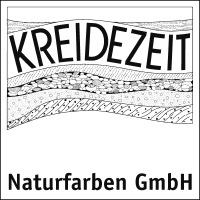Wallpaper glue and paste residues must be thoroughly removed from the substrate before painting or plastering over. This applies equally to all commercially available aqueous paints, regardless of whether conventional paints and plasters or natural paints are used.
We refer to this under “Preparing the Substrate” in the product information of our wall paints and plasters.
Why remove wallpaper glue residues?
Paint coats on wallpaper glue residues often flake off.
Old wallpaper glue can release yellow dyes that penetrate into the paint / plaster application.
What does “remove thoroughly” mean?
“Thoroughly” means complete!
It is not enough to peel off the wallpaper and scrape away the remains of the wallpaper.
Paste residues must also be removed from the pores of the substrate.
How do I recognize wallpaper glue residues?
Moisten the surface with a little water. If the surface is sticky / greasy after 1 – 2 minutes (finger test), wallpaper glue residues are present.
How’s it going right?
- Spray or brush surfaces with water (garden sprayer). Add a little washing-up liquid to the water to improve wetting. Leave to soak for at least 1 hour, during this time moisten several times. Then wash down from top to bottom with sponge + water. Lay out towels or similar to collect the washing water.
- Caution: Work carefully and protect wooden floors and laminate, so that liquid that has run down does not damage the wood.
How do I recognize a thorough result?
Another wetting test. If the surface becomes no longer greasy, the glue residues are regarded as removed.
Options
- Sand off glue residues with coarse sandpaper.
- If washing off or sanding is not possible, the only solution is to wallpaper again with diffusion-open paper wallpaper such as rough fibre, embossed paper wallpaper, painter’s fleece (e.g. Kobau RS paper fleece). Afterwards, various design options with Kreidezeit wall paints, brush-on plasters and wall glazes are available again.


